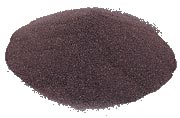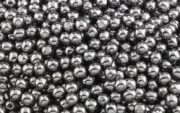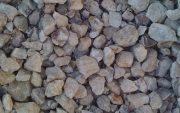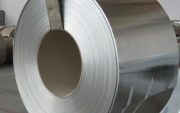MISCELLANEOUS
Rutile is an interesting, varied and important mineral. Rutile is a major ore of titanium, a metal used for high tech alloys because of its light weight, high strength and resistance to corrosion. Rutile is also unwittingly of major importance to the gemstone markets. It also forms its own interesting and beautiful mineral specimens.

Chemical Analysis – Guaranteed
| TiO2 | 92.00 % | min. |
| Fe2O3 | 1.00 % | max. |
| ZrO2 | 2.30 % | max. |
Chemical Analysis – Typical
| TiO2 | 66.00 % | |
| Fe2O3 | 0.80 % | |
| ZrO2 | 1.80 % | |
| P | 0.018 % | |
| S | 0.005 % | |
| SiO2 | Total | 2.00 % |
| Al2O3 | 0.50 % | |
| CaO | 0.15 % | |
| MgO | 0.03 % | |
| Cr2O3 | 0.12 % | |
| V2O5 | 0.45 % | |
| MnO | 0.02 % | |
| Nb2O5 | 0.30 % | |
| H2O | 0.10 % | |
| Loss on ignition | 0.35 % | |
Physical Data
| Specific gravity | 4.2 |
| Bulk density | 2.4 g/cm³ |
| Angle of repose | 32° |
| A.F.S. No. | 106 |
Typical Size Analysis Rutile sand is a natural product and the size analysis may vary but is typically:
| MICRONS | MESH (BSS) | WT% RET | WT% CUM |
| 250 | 60 | 0.5 | 0.5 |
| 212 | 72 | 0.6 | 1.1 |
| 180 | 85 | 2.3 | 3.4 |
| 150 | 100 | 12.1 | 15.5 |
| 125 | 120 | 26.6 | 42.1 |
| 106 | 150 | 31.9 | 74.0 |
| 90 | 170 | 21.1 | 95.1 |
| 75 | 200 | 4.1 | 99.2 |
| Pan | 0.8 | 100.0 | |
Rutile is an interesting, varied and important mineral. Rutile is a major ore of titanium, a metal used for high tech alloys because of its light weight, high strength and resistance to corrosion. Rutile is also unwittingly of major importance to the gemstone markets. It also forms its own interesting and beautiful mineral specimens.




